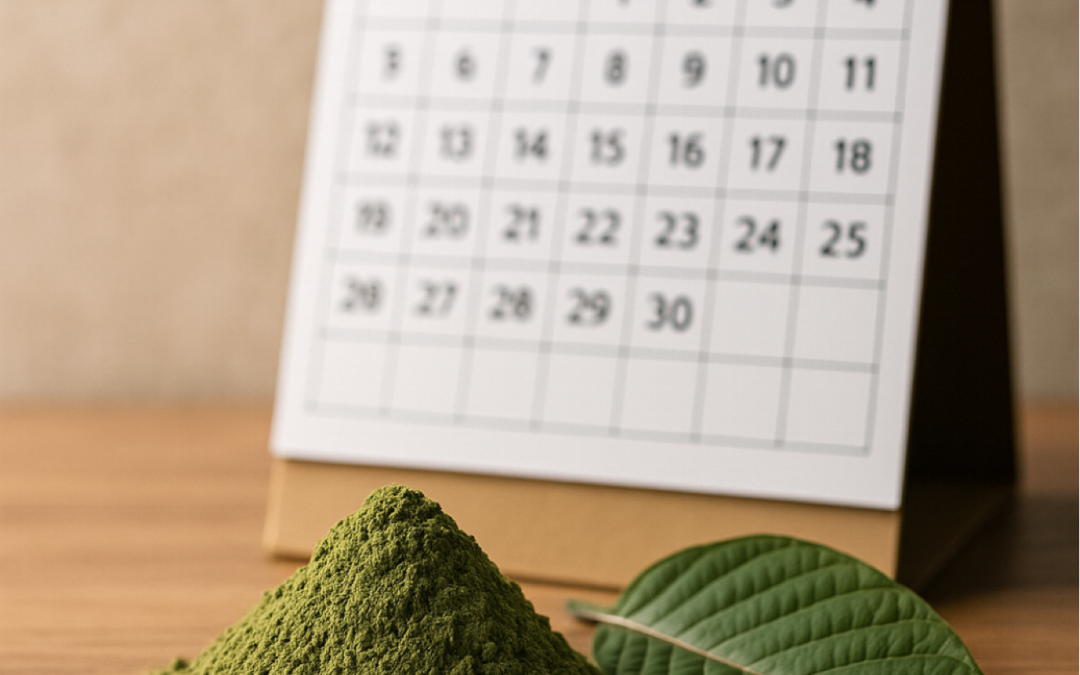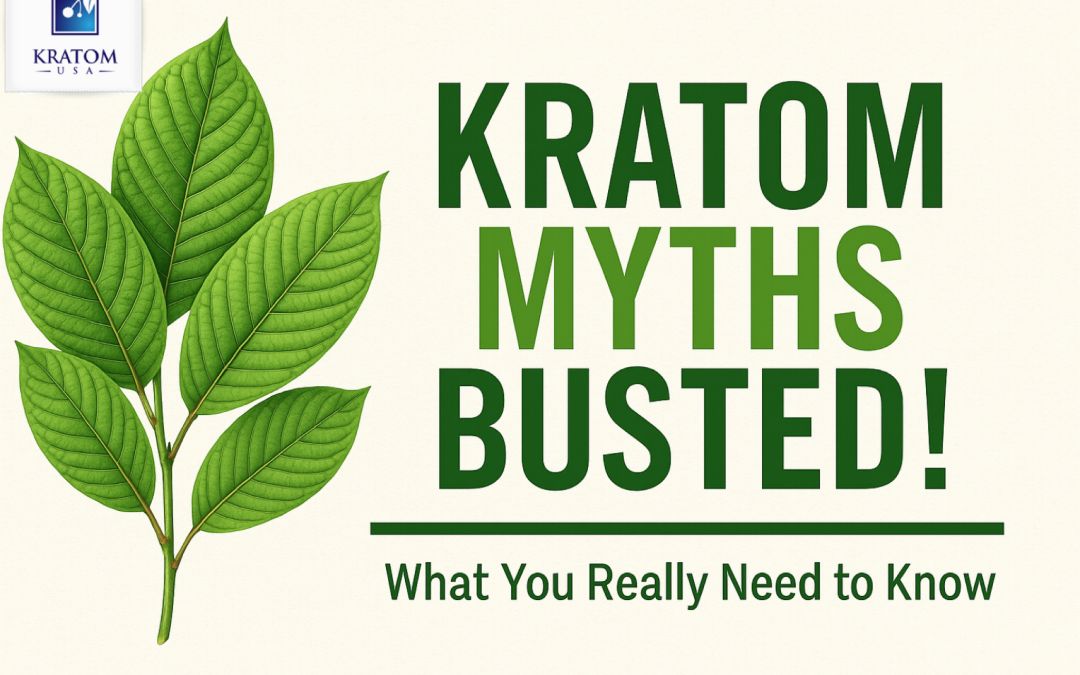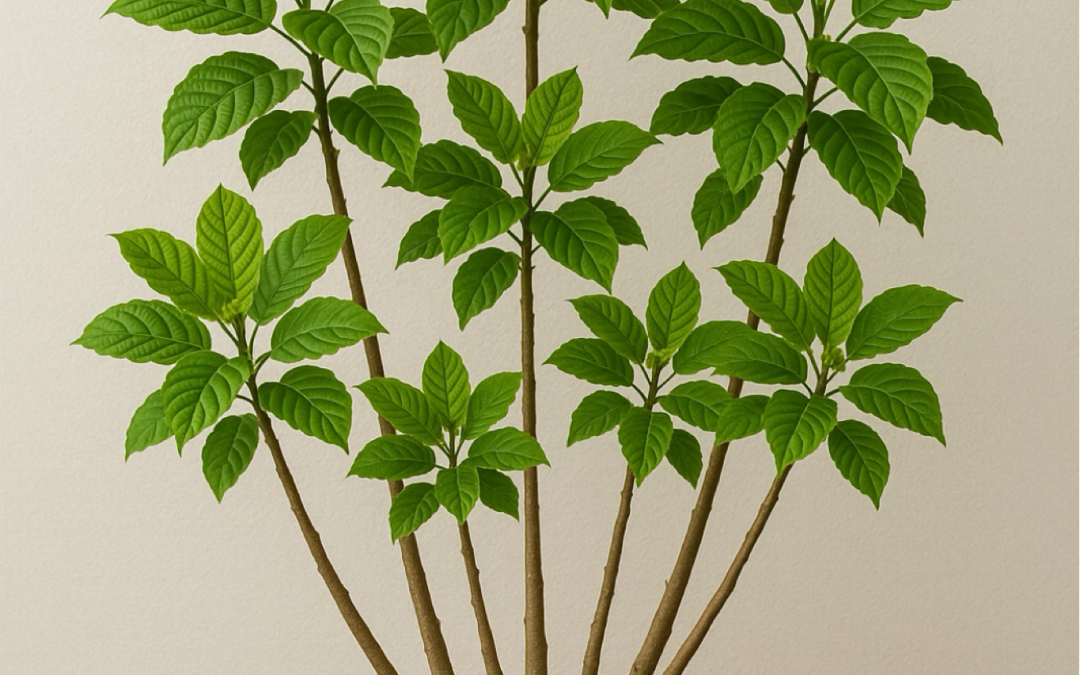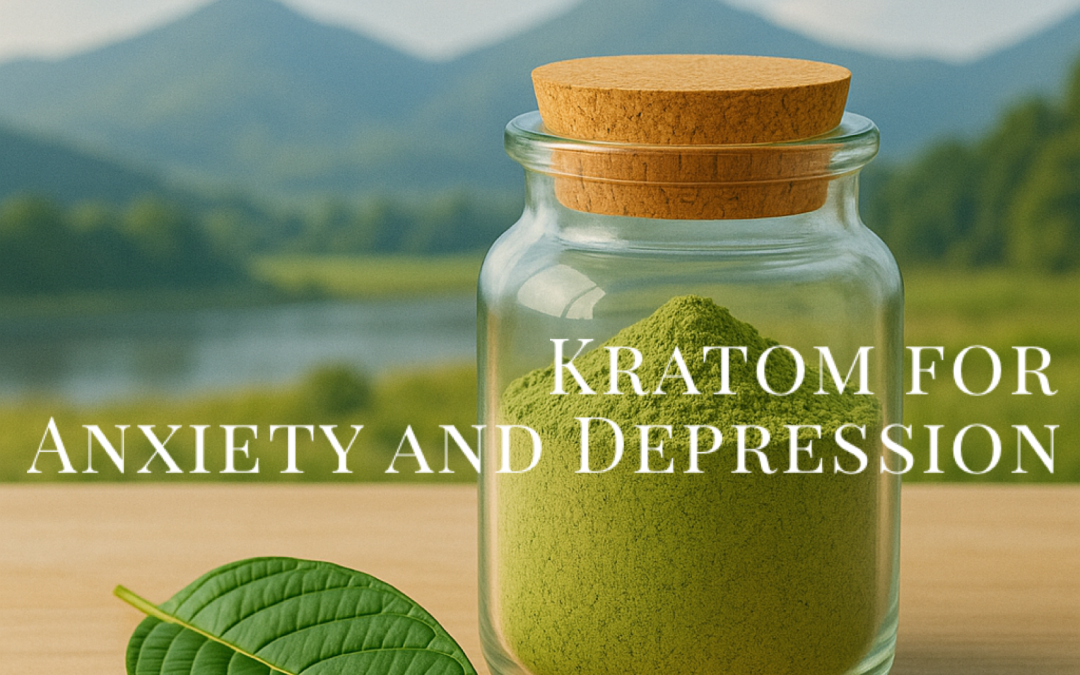
by KratomUSA | May 13, 2025 | Uncategorized
💪 Kratom for Fitness: The Best Strains, Dosages & Tips for Active Lifestyles
If you’re into fitness and wondering whether kratom belongs in your workout routine, you’re not alone. More and more athletes, gym-goers, and weekend warriors are asking: “Can kratom boost my workouts or help with recovery?” The answer is yes—if you choose the right strain and use it wisely.
Kratom, a natural botanical from Southeast Asia, contains powerful alkaloids that can help with energy, focus, endurance, and post-workout recovery. In this guide, we’ll break down the best kratom strains for fitness, how to use them, how much to take, and even how to turn kratom into a tasty tea or shake.
✅ Key Points: Kratom for Fitness at a Glance
-
White and green vein kratom strains are best for energy and focus during workouts.
-
Red vein kratom is ideal for muscle recovery and soreness.
-
Start with a low dose (1–3 grams) for pre-workout energy, and a moderate dose (2–5 grams) for post-workout recovery.
-
Only buy lab-tested kratom from reputable vendors.
-
You can take kratom as powder, capsules, tea, or even add it to smoothies.
-
Scientific studies are beginning to explore kratom’s impact on pain relief, energy, and endurance.
🧠 How Kratom Works in the Body
Kratom’s effects come from its primary alkaloids, mitragynine and 7-hydroxymitragynine. These compounds bind to opioid receptors in the brain but act differently from traditional opioids. At low doses, kratom offers stimulating, mood-lifting effects, while higher doses provide sedation and pain relief.
This makes kratom a versatile companion for:
🏋️♂️ Best Kratom Strains for Fitness Enthusiasts
🔹 White Vein Strains – Energy & Focus
-
White Maeng Da: Clean energy, mental sharpness, and mood boost.
-
White Borneo: Smooth focus, great for early morning training.
-
White Thai: Long-lasting with fewer jitters than caffeine.
🔹 Green Vein Strains – Balanced Energy & Recovery
🔹 Red Vein Strains – Muscle Recovery & Pain Relief
-
Natural Pain Kratom: A blend of red and green strains that is soothing and great for evening or daytime recovery.
-
Red Borneo: Deep relaxation and muscle relief.
-
Red Maeng Da: Stronger pain relief with mild sedation.
⚖️ Kratom Dosage Guide for Fitness Goals
| Goal |
Dosage (Powder) |
| Pre-workout energy |
1–3 grams (low dose) |
| Post-workout relief |
2–5 grams (moderate) |
| Deep recovery/sleep |
4–6 grams (evening) |
💡 Pro Tip: Always start low, especially with white strains. High doses can reduce focus and motivation—great for bedtime, not the bench press.
🛍️ How to Choose a Good Kratom Vendor
The quality of your kratom makes all the difference. Look for:
-
✅ Third-party lab testing (for alkaloid content and contaminants)
-
✅ Long-standing reputation a vendor that has withstood the test of time
-
✅ Clear strain labeling and sourcing info
-
✅ Positive customer reviews focused on energy, clarity, and relief
🛒 Trusted vendors like KratomUSA.com offer high-quality, lab-tested kratom powders, capsules, and extracts.
🧪 What the Science Says About Kratom and Fitness
Scientific research on kratom is still growing, but early studies and anecdotal reports support its fitness potential:
-
A 2020 study published in Drug and Alcohol Dependence found that users commonly report increased energy and physical performance from kratom use.
-
A 2022 review in Frontiers in Pharmacology noted kratom’s potential for pain relief, motivation, and mood enhancement—all valuable for athletes.
🍵 Kratom Recipes for Your Workout Routine
Here are a few fun ways to use kratom in your fitness regimen:
1. Pre-Workout Kratom Tea
-
2 grams white or green kratom powder
-
Steep in hot (not boiling) water with lemon juice
-
Add honey or agave to taste
2. Kratom Protein Smoothie
3. Post-Workout Kratom Shake
❓ FAQ: Kratom for Fitness & Workouts
Q: Is kratom better than pre-workout supplements?
A: It depends on your goals. Kratom provides smoother energy without the crash or jitters of many synthetic pre-workouts.
Q: Can I mix kratom with caffeine?
A: Some users do, but it can be overstimulating. Try kratom on its own first.
Q: How long do kratom’s effects last during a workout?
A: Typically 3–5 hours, depending on the strain and your metabolism.
Q: Will kratom affect hydration?
A: Yes—like caffeine, kratom can mildly dehydrate. Drink extra water before and after workouts.
Q: Can kratom help with post-workout soreness?
A: Yes! Red strains in particular can reduce muscle aches and support recovery.
🏁 Final Thoughts: Kratom & Your Fitness Journey
Kratom isn’t just for winding down—it’s quickly becoming a go-to herbal ally for fitness-focused individuals. Whether you want a boost before your workout or soothing relief after leg day, kratom can help you train smarter, recover faster, and feel better.
Just remember: quality matters, start slow, and listen to your body.
👉 Explore premium kratom strains for fitness at KratomUSA.com – and unlock your next level of performance.

by KratomUSA | May 12, 2025 | Uncategorized
🧠 Kratom and Concentration – Here’s What You Need to Know
Whether you’re powering through a long workday, tackling a study session, or just trying to stay mentally sharp, focus matters. And if you’re asking, “Can kratom help with concentration?” — the short answer is yes.
Kratom, a natural herbal supplement derived from the leaves of the Mitragyna speciosa tree, has been used for centuries in Southeast Asia for its stimulating and mood-enhancing effects. While many people associate kratom with pain relief or relaxation, specific strains of kratom can also offer enhanced mental clarity, energy, and focus—especially when taken in the right dose.
In this article, we’ll break down exactly how kratom works, why it supports focus, which strains to choose, how to dose it properly, and where to buy safe, potent kratom.
✅ Key Points: Kratom & Concentration at a Glance
-
Yes, kratom can help with concentration, particularly in low to moderate doses.
-
The alkaloid mitragynine stimulates the brain similarly to caffeine, improving mental clarity and motivation.
-
White and green vein kratom strains are best for focus and energy.
-
Low doses (1–3 grams) promote stimulation and concentration; higher doses may cause sedation.
-
Choose lab-tested kratom from reputable vendors to ensure purity and effectiveness.
-
New users should start slow and adjust based on their body weight and sensitivity.
🌿 How Kratom Works: A Quick Science Breakdown
Kratom contains over 40 active compounds, but the two most important are:
At low doses, mitragynine acts as a stimulant, binding to receptors in the brain responsible for alertness, motivation, and cognitive performance. It can boost acetylcholine levels, a neurotransmitter associated with learning, memory, and focus.
Unlike caffeine, which can lead to jitteriness or a crash, kratom delivers a smoother, longer-lasting stimulation for many users—especially when taken in the right strain and dose.
⚡ Best Kratom Strains for Focus and Concentration
Not all kratom strains work the same. Some are sedating, while others are energizing and clarity-boosting. Here are the best types for focus:
🔹 White Vein Kratom – The Ultimate Productivity Booster
-
White Maeng Da: Sharp focus, increased energy, and motivation.
-
White Borneo: Known for clean, sustained energy and mental stamina.
-
White Thai: Excellent for clarity without overstimulation.
🔹 Green Vein Kratom – Balanced Energy & Mood
Avoid:
🧪 How Much Kratom to Take for Concentration
When it comes to kratom and focus, less is more.
| Experience Level |
Dosage Guide |
| Beginner |
1–2 grams |
| Moderate User |
2–3 grams |
| Experienced |
3–4 grams |
💡 Important: Higher doses (5+ grams) may lead to drowsiness or reduced mental clarity—great for relaxation, but not ideal for productivity.
Tips for First-Time Users:
-
Start with 1 gram, wait 45 minutes, and assess your response.
-
Avoid combining kratom with other stimulants (like caffeine) until you know how it affects you.
-
Drink plenty of water—kratom is mildly dehydrating.
-
Take kratom on an empty stomach for best results.
🛒 Where to Buy Quality Kratom for Focus
With so many online vendors out there, it’s critical to buy from a reputable source. Look for:
-
Third-party lab testing: Ensures potency and no contamination.
-
Transparent labeling: Strain, alkaloid content, harvest date.
-
Good customer reviews: Look for feedback on energy and focus results.
🔎 Recommended Vendor: KratomUSA.com – known for fresh, lab-tested kratom in both powder and capsule form.
❓ FAQ: Kratom for Focus and Concentration
Q: Can kratom help with ADHD or brain fog?
A: Many users report improved focus and mental clarity, which can help with symptoms of ADHD or brain fog. However, kratom is not FDA-approved for any medical use, and individuals should consult their doctor.
Q: Will kratom make me jittery like caffeine?
A: Most users experience a smoother form of stimulation without the jittery side effects. White strains may feel more energizing; green strains tend to be more balanced.
Q: How long do the focus effects of kratom last?
A: Typically 3–5 hours, depending on the strain, dosage, and your body’s metabolism.
Q: Can I take kratom every day for concentration?
A: While some people do, it’s best to rotate strains and take tolerance breaks to avoid dependency or reduced effects.
Q: What’s the best way to take kratom for focus?
A: Many prefer capsules for convenience or powder mixed with juice for fast absorption. Some even make kratom tea, which offers smoother onset.
🧠 Final Thoughts: Stay Sharp, Naturally
So, can kratom help with concentration? Absolutely—when used correctly. With the right strain, dosage, and source, kratom can be a natural ally for enhanced mental clarity, focus, and motivation.
Whether you’re studying, working, or just want to stay sharp, kratom may offer the edge you need—without the crash.
👉 Ready to try it?
Explore lab-tested white and green kratom strains at KratomUSA.com and discover your perfect productivity companion.

by KratomUSA | May 12, 2025 | Uncategorized
🌿 How to Keep Your Kratom Fresh & Potent
Ever pulled out an old bag of kratom and wondered, “Is this still good?” You’re not alone! Whether you’re a daily user or a once-in-a-while kratom connoisseur, knowing how to store your kratom is key to preserving its alkaloid potency and overall quality. In this guide, we’ll cover how long kratom lasts, how to store it properly, and what signs indicate it’s gone bad. Here’s a look at everything you need to know about kratom shelf life!
Let’s keep your kratom fresh, folks. 🍃
✅ Key Points: Quick Takeaways
- Kratom shelf life is typically 1–3 years when stored correctly.
- Alkaloids like mitragynine degrade over time with exposure to air, heat, light, and moisture.
- Store kratom in an airtight, UV-blocking container in a cool, dark, dry place.
- Freezing kratom can extend shelf life even further (yes, really!).
- If it smells “off,” looks moldy, or has lost potency—it’s time to toss it.
🕒 How Long Does Kratom Last?
In ideal storage conditions, kratom powder can stay fresh for up to 1–3 years. However, that all depends on how well you store it. If you’re buying kratom in bulk or stocking up on your favorite strain during a sale, proper storage is essential to preserve those precious alkaloids that make kratom effective.
🧪 Why Does Kratom Lose Potency?
Kratom’s power comes from its alkaloids—mainly mitragynine and 7-hydroxymitragynine. These chemical compounds are sensitive to environmental factors like:
- Heat – speeds up alkaloid breakdown
- Air (oxygen) – oxidizes and degrades the powder
- Light – especially UV rays, break down potency
- Moisture – promotes mold and mildew
Translation: if you leave kratom out in the open or in a warm, sunny spot, you’re sabotaging your stash. 😬
🏡 How to Store Kratom for Maximum Shelf Life
Here’s your golden rule: cool, dark, dry, and airtight. If you remember that, you’re already ahead.
🔒 Use Airtight Containers
Zip bags? Not great. Instead, use:
- Mason jars
- Mylar bags
- Vacuum-sealed bags
These block air and moisture better than the original packaging.
🌡️ Store in a Cool, Dark Place
Think pantry—not your bathroom or sunny kitchen windowsill. Avoid high-traffic areas where temperature fluctuates.
🧊 Can You Freeze Kratom?
Yes! Freezing kratom (especially long-term) can lock in alkaloid freshness. Just:
- Use vacuum-sealed or airtight containers.
- Let it come to room temp before opening to avoid condensation.
👃 Signs Your Kratom Has Gone Bad
Not sure if your kratom is still good? Watch out for:
- Faded smell or strange odor
- Clumping or damp texture
- Discoloration
- Loss of effects
If in doubt, toss it out. Fresh kratom should smell earthy, vibrant, and slightly bitter—never musty.
🧂 What About Flavored or Blended Kratom Products?
Kratom tinctures, extracts, and capsules often include additional ingredients. These might have shorter shelf lives than raw powder. Always check labels for expiration dates and store them in a cool, dark spot.
🏆 Bonus Tips to Keep Kratom Fresh Longer
- Divide large bags into smaller containers for daily use.
- Add food-safe oxygen absorbers to your jar.
- Label your stash with the purchase or open date.
- Keep different strains in separate containers—no one wants a Red/White Maeng Da mash-up by accident.
❓ FAQ: Kratom Storage & Shelf Life
Q: Can kratom expire?
A: Kratom doesn’t “expire” like milk, but it can degrade. Old kratom loses potency and may grow mold if not stored properly.
Q: Does kratom go bad in heat?
A: Absolutely. Heat speeds up alkaloid breakdown, so avoid warm places like cars or near appliances.
Q: Is it okay to store kratom in the fridge?
A: Yes, as long as it’s in an airtight container and well-sealed. Just avoid moisture build-up.
Q: How do I know if kratom is still potent?
A: A strong earthy smell and noticeable effects when consumed are good signs. Weak smell = weak kratom.
Q: What’s the best way to store kratom long term?
A: Vacuum-seal your powder, add oxygen absorbers, and freeze it. Label it and only open what you need.
💬 Final Thoughts
Kratom doesn’t last forever—but with a little storage savvy, you can keep your stash fresh and powerful for the long haul. Whether you prefer green vein powder, red capsules, or concentrated extracts, proper storage is key to keeping the alkaloids active and the experience enjoyable.

by KratomUSA | May 9, 2025 | Uncategorized
🌿 Kratom Myths Busted! What You Really Need to Know
If you’ve spent any time Googling what is kratom, you’ve probably seen a ton of conflicting information. Some call it a miracle plant. Others call it dangerous. So what’s the truth?
At Kratom USA, we believe in facts, not fear. We’re here to bust through the confusion and bring you straight answers about kratom effects, legality, and usage—in a way that’s fun, friendly, and easy to understand. Here are 7 common kratom myths busted. Let’s jump in!
🚫 Myth #1: “Kratom is just another opioid.”
Truth: Kratom contains alkaloids like mitragynine and 7-hydroxymitragynine, which interact with opioid receptors, but kratom is not classified as an opioid. Unlike traditional opioids, kratom doesn’t suppress breathing, making overdose extremely rare. Many people actually use kratom as a natural way to ease off prescription opioids.
👉 Looking for a natural alternative? Consider buying kratom from trusted sources like KratomUSA.com.
🌱 Myth #2: “It’s totally safe because it’s natural.”
Truth: Sure, kratom is natural—but so are poison ivy and wild mushrooms. “Natural” doesn’t mean risk-free. Kratom effects vary by dose and individual. Stick to recommended dosing and always buy kratom from vendors who test for purity and potency.
🎉 Myth #3: “People only use kratom to get high.”
Truth: That’s simply not true. Most kratom users are regular folks using it to manage real issues—chronic pain, anxiety, fatigue, or even opioid withdrawal. It’s a wellness tool, not a party drug.
😵 Myth #4: “Kratom gets you high like other drugs.”
Truth: Kratom doesn’t create a narcotic high. At low doses, it acts as a natural stimulant that boosts energy and focus. Higher doses may help with pain relief or promote a sense of calm—but it’s not mind-altering like other substances.
If you’re looking for balanced support, certain kratom strains like Green Maeng Da are known for their clarity and calm.
❌ Myth #5: “There’s no medical benefit to kratom.”
Truth: While the FDA hasn’t approved kratom as a medicine, users and researchers continue to explore its benefits. Kratom for pain, depression, and withdrawal support is a growing field of study. Anecdotal evidence is strong, and clinical research is underway.
🗺️ Myth #6: “Kratom is illegal everywhere.”
Truth: Definitely false. Is kratom legal? Yes—in most U.S. states. A few places (like Alabama, Indiana, and some cities) have banned it, but the majority allow it. Always check your local laws, but in general, you can buy kratom online legally in most areas.
🍃 Myth #7: “All kratom is the same.”
Truth: Nope! Kratom strains come in red, green, white, and blended varieties—each with its own effects.
- Red strains are great for pain relief and relaxation.
- Green strains offer balanced energy and mood support.
- White strains are energizing and focus-friendly.
- Extracts and tinctures offer the most potent form for advanced users.
❓ Kratom FAQ: Quick Answers for Curious Minds
Q: Can I take kratom daily?
A: You can, but it’s smart to rotate strains and take breaks to avoid tolerance. Consistency with moderation is key.
Q: Will kratom show up on a drug test?
A: Most standard drug panels don’t test for kratom. Specialized tests might, but it’s rare.
Q: How do I take kratom?
A: You can drink it as tea, take kratom capsules, mix the powder with juice, or try tinctures. Explore what works best for your body and goals.
Q: What strain is best for pain?
A: Many users say Red Bali or Red Maeng Da are the best kratom strains for pain.
💚 Final Thoughts
There’s no shortage of myths out there about kratom—but once you dig into the facts, it’s clear this plant deserves a closer look. Whether you’re new to kratom or a seasoned user, the key is to stay informed, source your kratom from a trusted vendor, and use it responsibly.
👉 Ready to try it for yourself?
KratomUSA.com is a trusted source for high-quality kratom powder, capsules, and extracts.

by KratomUSA | May 3, 2025 | Uncategorized
Growing Potent Kratom Like a Pro
So, you want to grow your own kratom—and not just any kratom. You want the good stuff. The kind of kratom with rich, powerful leaves packed with natural alkaloids. Whether you’re tired of overpriced powder or just curious about the whole process, this guide is your one-stop shop for how to grow the most potent kratom from scratch.
We’ll walk you through everything: how to raise a healthy kratom tree, how to get those leaves to reach peak potency, how to harvest and cure them like a pro, and how to turn your homegrown stash into powder, capsules, or even a DIY kratom tincture. Let’s get growing!
🔑 Key Points
-
Potency is all about alkaloid levels, and those depend on things like sun, soil, and maturity.
-
The same tree can produce red, green, or white kratom—it’s all in the timing and how you process the leaves.
-
Sunlight, humidity, and good soil = stronger, more potent kratom.
-
Harvest your leaves at the right moment to get the most bang for your botanical buck.
-
You can chew raw leaves, grind them into powder, make capsules, or even create your own kratom tincture.
-
Want your tincture to taste good? 🍋 You can flavor it too!
☀️ What Makes Kratom Potent?
Here’s the thing: not all kratom is created equal. What makes some leaves more potent than others comes down to their alkaloid content—mainly mitragynine and 7-hydroxymitragynine. These natural compounds are responsible for kratom’s effects.
Here’s what affects how much of those good alkaloids you get:
-
Sunlight: More sun = more potency.
-
Humidity: High humidity (70–90%) helps mimic kratom’s jungle roots.
-
Soil: Nutrient-rich, well-draining soil is a must.
-
Age of the leaf: Older leaves are stronger. Young ones? Not so much.
-
Watering: Keep it moist, but don’t drown it!
🌱 Growing Your Kratom Tree from the Ground Up
Step 1: Start With a Seedling
Kratom seeds are fussy and lose viability quickly, so unless you’re up for a challenge, go with a healthy seedling. They’re way easier to manage and more likely to thrive.
Step 2: Create the Perfect Kratom Oasis
Kratom trees are tropical divas—they like it hot, humid, and bright.
-
Outdoors? Great if you live in zones 9–11 (think Florida or southern Texas).
-
Indoors? No problem. Just grab some grow lights, a humidifier, and a warm spot.
Ideal temps: 75–95°F
Humidity: 70–90%
Step 3: Potting and Soil
Go with a mix of compost, peat, and perlite. Think fluffy and rich. Bonus points for organic nutrients.
Step 4: Water + Feed
Water daily or when the topsoil feels dry. Monthly feeding with an organic fertilizer keeps it happy.
Step 5: Prune and Shape
Cut it back a bit to help it grow wide and bushy. More branches = more leaves!
🍃 Harvesting for Max Potency
Alright, your tree’s looking lush. But don’t just grab the first leaf you see—timing is everything.
When to Harvest
-
Wait until the leaves are dark green and thick.
-
Skip the baby leaves—they’re weaker.
-
Early morning is best for harvesting. It’s when alkaloids are at their peak.
How to Harvest
Snip mature leaves with scissors or shears. Be gentle—you’re a kratom whisperer now.
Drying Like a Pro
-
Lay leaves out on a screen or rack in a dark, dry, well-ventilated room.
-
No direct sunlight! You want to preserve those precious alkaloids.
-
After 3–5 days, leaves should feel crisp and crumble easily.
🧪 Now What? Making Your Own Kratom Products
➤ Chewing Raw Leaves
Traditional, fast-acting, and very natural (but kinda bitter). Just strip out the stem and vein first.
➤ Crushed Leaf Tea
Great for making teas! Break up dried leaves into small chunks. Store in a jar or zip bag.
➤ Grind Into Powder
Use a blender, spice grinder, or coffee grinder. Sift to make it super fine. Store in airtight containers.
➤ Make Kratom Capsules
Use a capsule-filling machine and “00” capsules. Easy, mess-free, and travel-friendly.
🧉 DIY Kratom Tincture (With Flavor!)
What You’ll Need:
-
100g kratom powder
-
500ml high-proof alcohol (vodka or Everclear works well)
-
A mason jar
-
Optional: lemon juice (helps extract alkaloids)
-
Optional: mint, vanilla, or orange peel for flavor
Directions:
-
Mix powder and alcohol in a mason jar.
-
Add a splash of lemon juice or citric acid.
-
Let it sit for 2–3 weeks in a cool, dark place. Shake daily!
-
Strain with cheesecloth or a coffee filter.
-
Pour into dropper bottles and store.
Flavor Tips:
-
Add fresh mint leaves, vanilla beans, or orange zest during steeping.
-
A few drops of honey post-filtration can smooth out bitterness.
❓ FAQ: Your Kratom-Growing Questions, Answered
Q: How long does it take to grow kratom leaves ready for harvest?
A: Usually 6–12 months, depending on climate, care, and plant health.
Q: Can I grow kratom indoors year-round?
A: Yep! Just be sure to use grow lights and keep humidity high.
Q: Do I need special soil?
A: Not special, but rich and well-draining soil like compost mixed with perlite works best.
Q: What’s stronger—fresh leaves or powder?
A: Dried and cured leaves usually have more concentrated alkaloids. Powder made from those is typically stronger.
Q: How long will my kratom powder stay fresh?
A: If kept cool and dry, about 6–12 months.
🌿 Final Thoughts
Learning how to grow the most potent kratom is part science, part gardening, and part passion. With the right environment, care, and timing, you can grow high-quality kratom with maximum potency. Happy growing!

by KratomUSA | May 2, 2025 | Uncategorized
Understanding Kratom’s Role in Mental Health
The growing interest in kratom for anxiety and depression reflects a broader shift toward natural alternatives for mental health support. As more individuals seek relief from stress, low mood, and emotional imbalance without relying on pharmaceuticals, kratom has emerged as a promising option. With its unique ability to both calm and uplift, kratom is gaining attention from those looking for new ways to manage anxiety and depression. In this article, we’ll explore how kratom works, what the research says, and what users should know before trying it.
Key Points
-
Natural Origin: Kratom (Mitragyna speciosa) is a tropical tree native to Southeast Asia, traditionally used for its stimulant and sedative properties.
-
Mood Enhancement: Some users report that kratom helps alleviate symptoms of anxiety and depression by promoting relaxation and improved mood.
-
Limited Scientific Evidence: While anecdotal reports are common, scientific studies on kratom’s efficacy for mental health conditions are limited and inconclusive.
-
Potential Risks: Kratom use may lead to side effects, including dependency, withdrawal symptoms, and other health concerns.
-
Regulatory Status: Kratom is not approved by the U.S. Food and Drug Administration (FDA) for medical use, and its legal status varies by state.
Kratom has gained popularity in recent years as individuals seek alternative remedies for managing anxiety and depression. The plant’s leaves contain compounds that interact with opioid receptors in the brain, potentially leading to mood-enhancing effects. Users have reported feelings of increased energy, improved focus, and relief from depressive symptoms.
A case study published in the Journal of Psychoactive Drugs detailed an individual’s use of kratom for self-managing depression and anxiety. The subject reported that kratom helped reduce hyperarousal, rumination, and job-related anxiety, enhancing sociability and suppressing depressive moods. However, during periods of increased stress, the effectiveness diminished, leading to a reliance on other medications.
Scientific Perspectives and Research
Research on kratom’s impact on mental health is still emerging. Some studies suggest potential benefits, while others highlight risks:
-
A systematic review in Drug and Alcohol Dependence indicated that kratom might have mood-enhancing and anxiety-relieving properties for some individuals.
-
Conversely, the FDA has expressed concerns about kratom’s safety, citing risks of addiction, abuse, and serious health consequences.
Potential Risks and Considerations
While some users find relief with kratom, it’s essential to be aware of potential risks:
-
Dependency and Withdrawal: Regular use can lead to dependence, with withdrawal symptoms including irritability, muscle aches, and mood disturbances.
-
Side Effects: Reported side effects range from nausea and constipation to more severe issues like liver toxicity and seizures in rare cases.
-
Lack of Regulation: The absence of standardized dosing and quality control can lead to variability in product potency and purity.
Legal and Regulatory Status
Kratom’s legal status in the U.S. is complex:
-
Federal Level: The FDA has not approved kratom for any medical use.
-
State Level: Legality varies by state, with some banning its sale and use, while others permit it under specific regulations.
Frequently Asked Questions (FAQ)
Q1: Can kratom effectively treat anxiety and depression?
A1: While some users report relief from symptoms, scientific evidence is limited, and kratom is not approved by the FDA for treating mental health conditions. But there are thousands of kratom advocates who report benefits. If you are considering kratom for anxiety and depression, weigh all of the evidence.
Q2: What are the risks associated with kratom use?
A2: Potential risks include mild dependency (similar to caffeine), withdrawal symptoms, side effects like nausea and variability in product quality due to lack of regulation.
Q3: What are the reported benefits of kratom use?
A3: Many users turn to kratom for natural pain relief, particularly for conditions like arthritis, chronic pain, and back pain, due to its active alkaloids that interact with opioid receptors. In smaller doses, kratom can act as a mild stimulant, boosting energy, focus, and productivity — similar to caffeine. Others use kratom to reduce anxiety and stress, enhance mood, and improve overall well-being, especially with red vein strains known for their calming properties. Kratom has gained popularity as a tool for easing opioid withdrawal symptoms such as muscle aches, nausea, and cravings. Some users also report better sleep and reduced social anxiety, depending on the strain and dosage.
Q4: Is kratom legal in my state?
A3: Kratom’s legality varies by state. It’s essential to check local laws and regulations before purchasing or using kratom. Here is a guide where you can check the legality in your state.
Q5: Should I consult a healthcare provider before using kratom?
A4: Yes. Always consult with a healthcare professional before starting any new supplement, especially for managing mental health conditions.
Disclaimer: This article is for informational purposes only and does not constitute medical advice. Always consult with a qualified healthcare provider regarding any health concerns or before starting new treatments.







